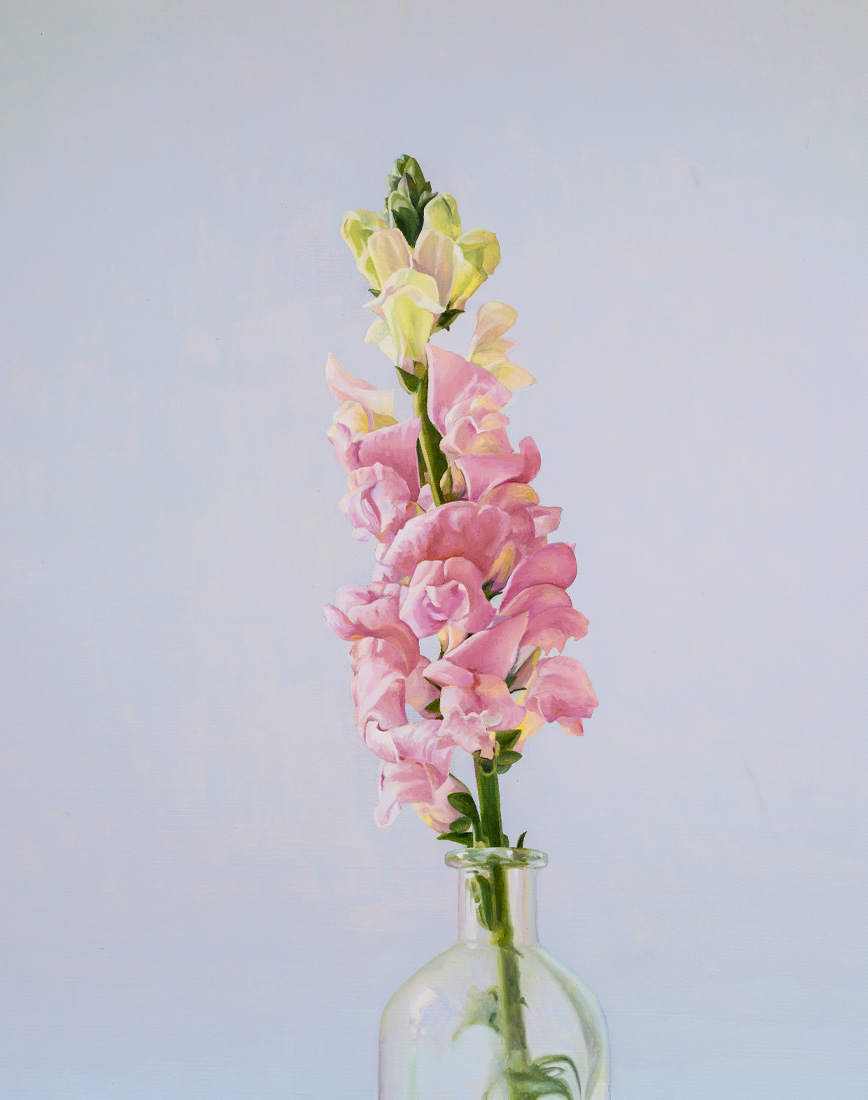More than 20 artists are featured in Rearranged: Art of the Flower, an exhibition that beholds all things floral as both muse and storyteller. Artists have long been drawn to flowers, many simply by their beauty and others by their ability to share stories across cultures – stories of life, love, grief and everything in between.
Not only visually stunning, the works in Rearranged tell stories of place and migration, of fragility and transience, self-identity and well-being. They encourage us to reflect on ourselves and the world around us, on the ways in which flowers can be used and what flowers represent. The artists’ thoughts and processes range as widely as their finished works, as widely as flowers themselves – take a sneak peek at five.
Karen Stone
Karen Stone explores ‘home’ as both a physical place and emotional concept, drawing on her personal experiences as a single, older and non-homeowning Australian woman.
In the homes of her childhood, Karen was surrounded by floral patterns – on curtains, wallpapers, carpets, couches and tea towels. As she grew up, Karen continued to collect floral fabrics in the homes she rented.
Inspired by these floral patterns, Karen creates large-scale ‘paper-arabesques’. She tears apart second-hand clothes, then pulps them in a Hollander beater. Using squeeze bottles, she applies the different coloured pulps onto a large silkscreen, building layer upon layer. Over time, the pulp fibres bind together to create a single sheet, which Karen carefully peels off the screen once dry. The resulting works captivate you as you move around them, enveloping you through sheer scale.

Elisa Jane Carmichael
One spring day, Quandamooka artist Elisa Jane Carmichael gathered a bunch of wildflowers on the sand tracks of her home on Minjerribah (North Stradbroke Island). This was the beginning of her ‘ragi’ series (ragi means ‘bush’ in Jandai language), which celebrates the wildflowers on Quandamooka Country.
Using a flower press created by her father, Elisa preserved the flowers she gathered and later printed them alongside ungaire (freshwater swamp reed), gulayi (women’s bag) and string. She followed the cyanotype process, which involves placing objects on chemical-coated fabric later exposed to the sun. For Elisa, the colours that emerge remind her of the Quandamooka sea. Using talwalpin (cotton tree) thread, Elisa then embroidered floral motifs onto her prints.
Elisa’s work embraces the potential of plants, imbued with ancestral memory and reflective of the richness of Country.

Monica Rohan
Monica has always been drawn to Brisbane’s flowering trees. They abound throughout the parks and streets, are largely unkempt and proudly mark the changing seasons.
In her paintings, Monica imagines herself climbing a mountain of poinciana, floating amongst a cloud of bougainvillea and falling into a shower of golden petals. Painted at an enlarged scale, the patterns that emerge from the foliage are brought into focus, meticulously executed through a laborious yet meditative process.
Although Monica began using herself as the model for her figures for practical reasons, by placing herself within these fantastical landscapes, she becomes the protagonist of her paintings. While playful and whimsical, her paintings can also overwhelm. They express her anxieties, which at times, run as rampant as Brisbane’s flowering trees.

John Honeywill
John Honeywill is often attracted to painting an object because of its beauty. Sometimes, though, he is persuaded to paint something by a quality of ‘otherness’, which will alter first when it is rendered by the artist, and again when a viewer contemplates his painting.
Having learned from Merv Moriarty and other instructors with the renowned Flying Arts Alliance, John dedicated much of his career to teaching. He now paints full-time in his home studio in Kedron.
John’s meticulous works have been described as ‘pure distillation of presence’ – but what may be present in the painting could be a paper bag, a couple of eggs or a pink Turkish delight. Equally, it may be a perfect snapdragon, orchid, kangaroo paw or magnolia. ‘I paint the quiet visual conversations between everyday objects,’ John says, describing still life as a kind of art that ‘links the intimate world with the public’.

Ashlee Becks
The rich textures of Ashlee’s paintings is created through a technique called impasto, which involves using a palette knife to thickly layer paint onto a surface.
Ashlee’s practice is one of embodied mark-making, where the physicality and time required to create her paintings enables her to work through her emotions, from self-discovery to healing. In this work, she depicts a profusion of flowers, composed to resemble a patchwork quilt. She pays homage to women’s work as being both intelligent and an act of self-care.
Although not a self-portrait, this painting is largely autobiographical. It reflects and is also part of Ashlee’s journey of recovery as someone who has experienced mental illness. At first glance, the ‘blanket of flowers’ evokes beauty and comfort but there is an unease to the painting. Ashlee describes the work as reflecting her state of mind, where beauty and disarray fluctuate, emphasising recovery as non-linear.

Rearranged: Art of the Flower is open from 25 November 2023 – 11 August 2024.
Immerse yourself in the brilliant blooms of Brisbane.







